Whether you fancy exploring popular attractions without the crowds of tourists, admiring the turquoise waters and sandy beaches of the Mediterranean in winter sun destinations or soaring down ski slopes, Europe in March has plenty on offer.
European cities are generally quiet in March, making it the ideal time to explore tourist attractions, coastal destinations in Southern Europe have just enough warmth and sunlight for a beachy trip and the mountains still have plenty of snow.
To put together this post of the best European destinations in March, I’ve collaborated with other expert travel bloggers who have all told me their number one place to visit on the continent in March.
We have a collection of cities, winter sun destinations, snowy landscapes and even ski resorts; perfect for any kind of trip.
Why visit Europe in March?

As Europe gradually exits winter, some of the snowier destinations thawing and some winter sun locations heating up considerably, the continent offers a range of different activities and attractions.
Europe’s busy seasons are typically in the summer (May to September), December for Christmas holidays and ski seasons are often busy in January and February.
March remains quiet in most destinations; but the savvy traveler knows that this is an excellent time to beat the crowds, enjoy trips at great value and, if you go to the right place, relish in gorgeous early-spring weather.
Things to do in Europe in March
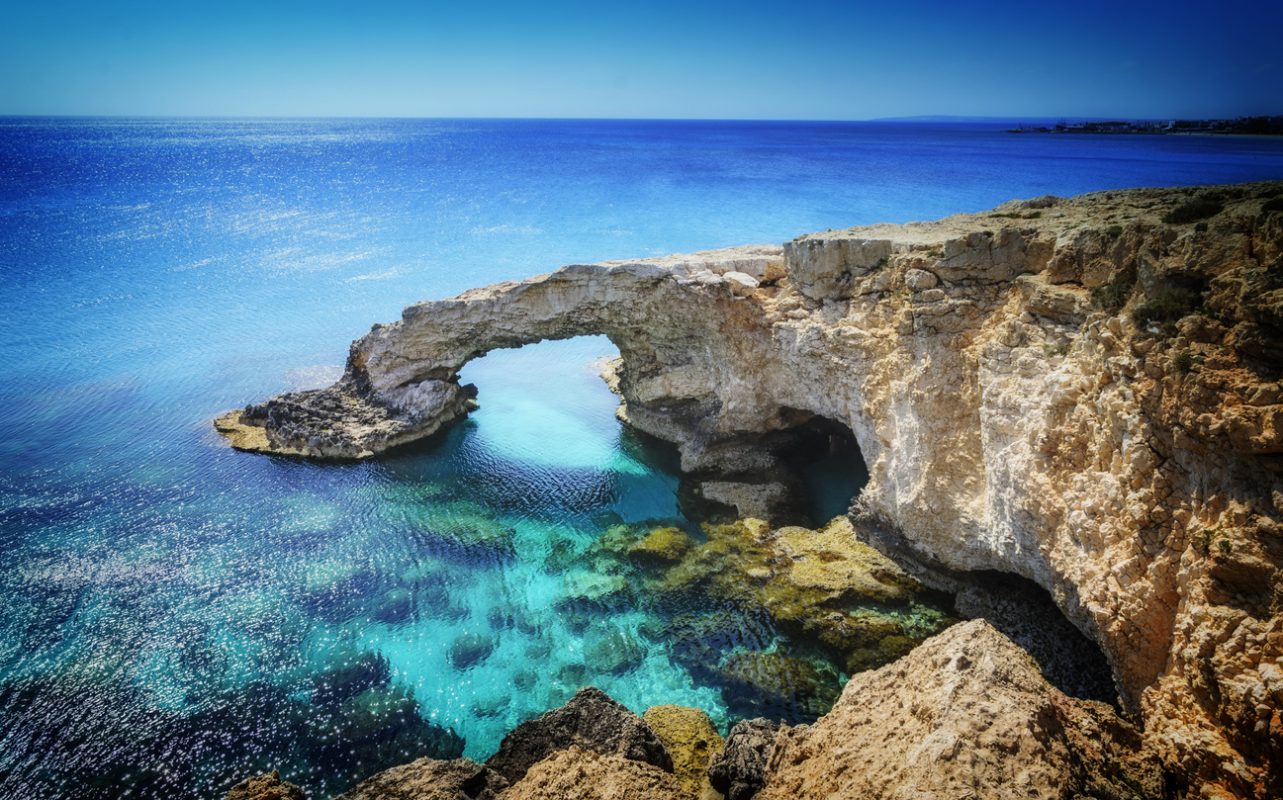
One of the main reasons to visit Europe in March is that you can pretty much do anything!
If you want winter sunshine, the average temperatures in places like Southern Spain, Cyprus and Malta sit comfortably in the low 20°Cs/ 70°Fs.
The water temperature might be a bit too chilly to swim in the sea (March is typically the coldest month for the sea in most countries in Europe) but there will likely still be plenty of sunny weather for sitting outdoors!
If it’s snow that you’re after, the slopes generally still have some (particularly in resorts where they make artificial snow). The ski season in the Alps usually lasts until April, so they’re still active in March – although are slightly less swamped with tourists than earlier in the season.
Or, if you want snow but don’t fancy snowsports, Nordic countries are usually still quite frosty and have a certain charm to them at this time of year – without being too cold.
Alternatively, visit some of Europe’s best cities – Dubrovnik, Malaga, and Bruges to name but a few – for a more relaxed city break experience with generally comfortable temperatures and fewer crowds.
Best places to visit in Europe in March for winter sunshine
You’ll usually find winter sun destinations in the southern part of Europe; most notably islands or countries with a Mediterranean coastline like Malta, Portugal, Spain and Sicily.
Here are some of the best warm places to visit in March – or check out my full guide here!
Malta
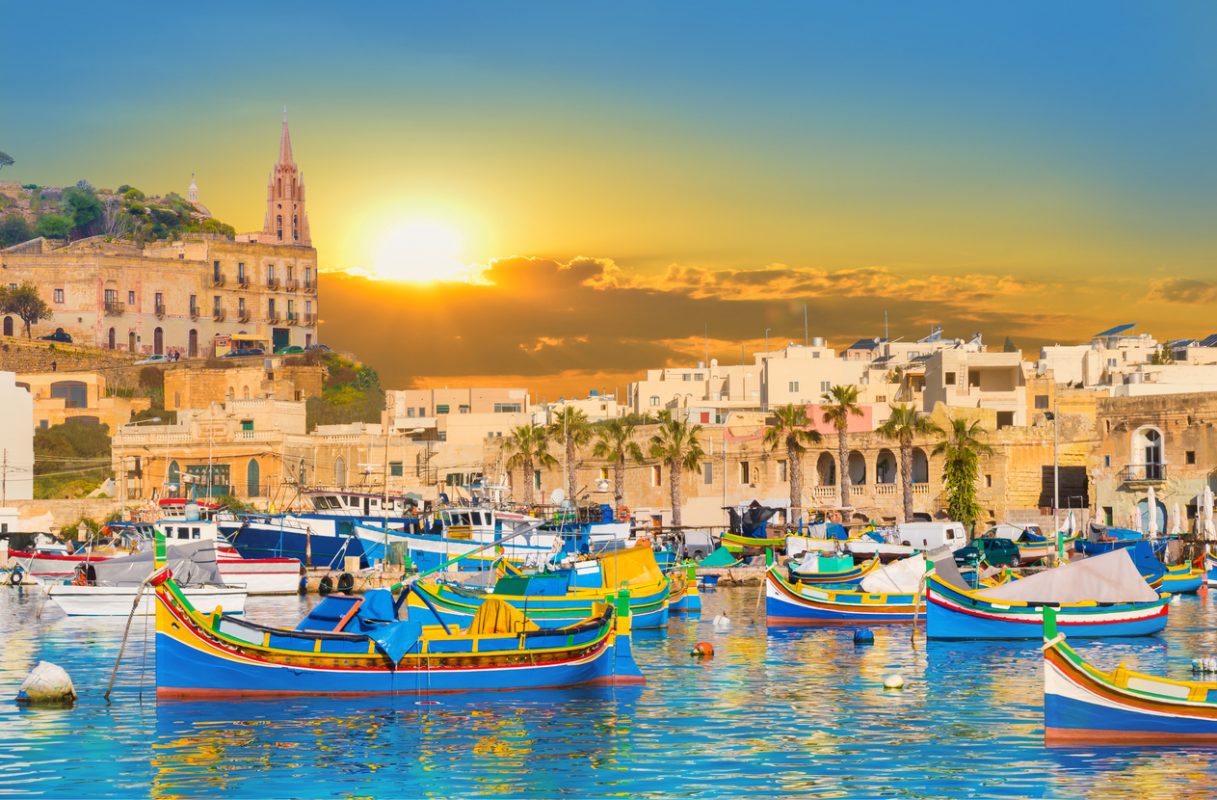
With its all-year-round great climate, endless things to do and a location that’s easily reachable from all parts of Europe and beyond, Malta is becoming a haven for sunseekers.
It’s a fantastic place to visit all year round, but it’s particularly special in March!
During March, you’ll find the weather is perfect for exploring Malta’s beaches, with temperature highs of up to 17°C/ 63°F. Plus, Malta has way fewer crowds than in the summer seasons.
You’ll also find cheaper flights and hotels when planning a trip to Malta during March.
The best things to do in Malta include visiting the stunning Blue Lagoon, taking a day trip to the smaller island of Gozo and exploring the streets of the stunning capital city, Valletta.
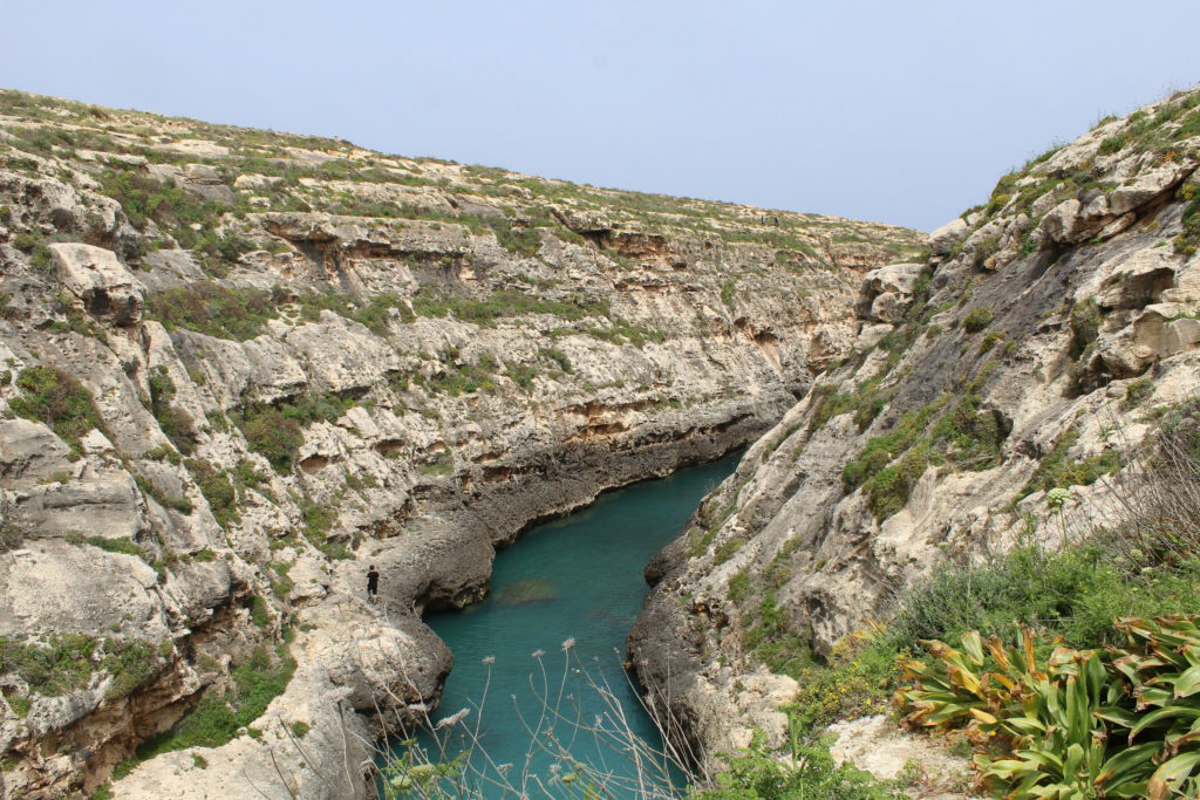
Where to stay
To make the most of the stunning beaches, one of the best places to stay is Pebbles Resort in St Paul’s Bay.
By Lowri from Many Other Roads
Algarve, Portugal
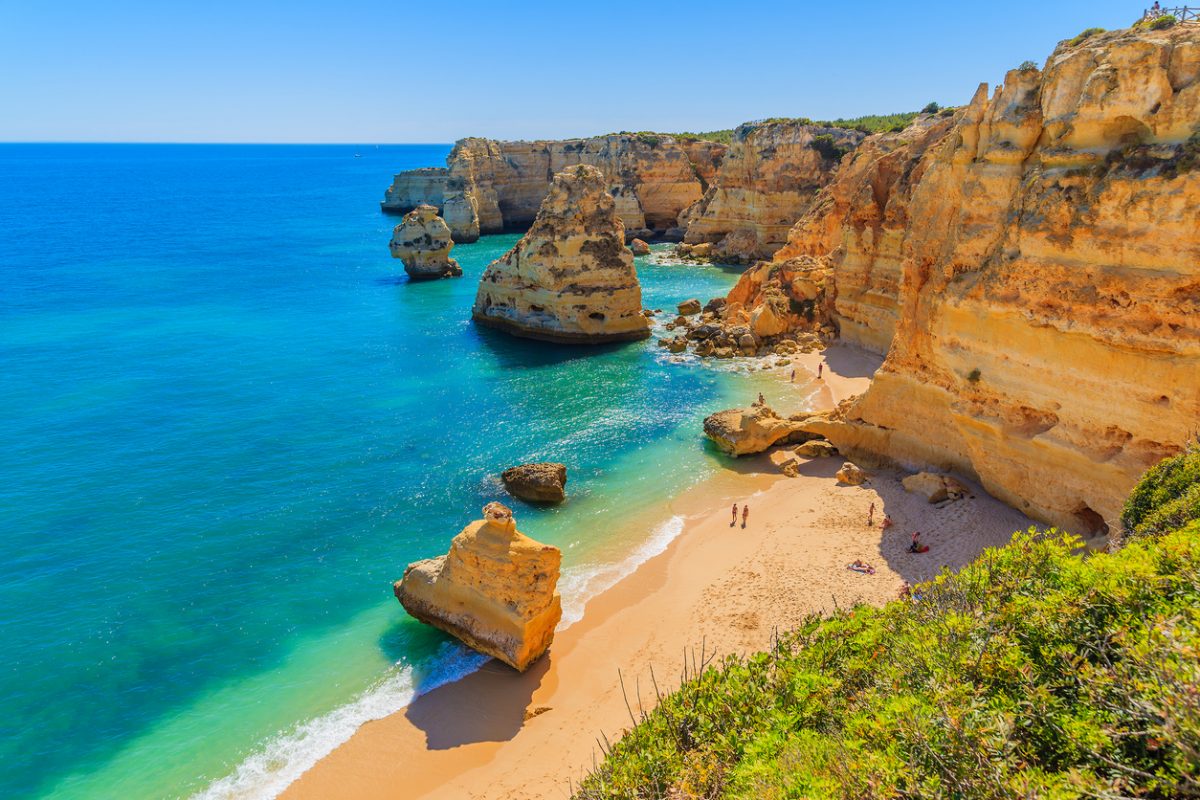
The Algarve region, located on Portugal’s southern coast, has pleasant weather year-round with more than 300 sunny days.
The south of Portugal is known for its beautiful beaches and rugged limestone cliffs.
With spring in the air and an average daily maximum temperature of 19ºC/ 66°F, March is certainly warm enough for walks and picnics on the beach.
Hiking, surfing, and other outdoor activities are very popular in the area at this time of the year; the Algarve boasts some spectacular nature, and it’s much quieter in March than at other times of the year.
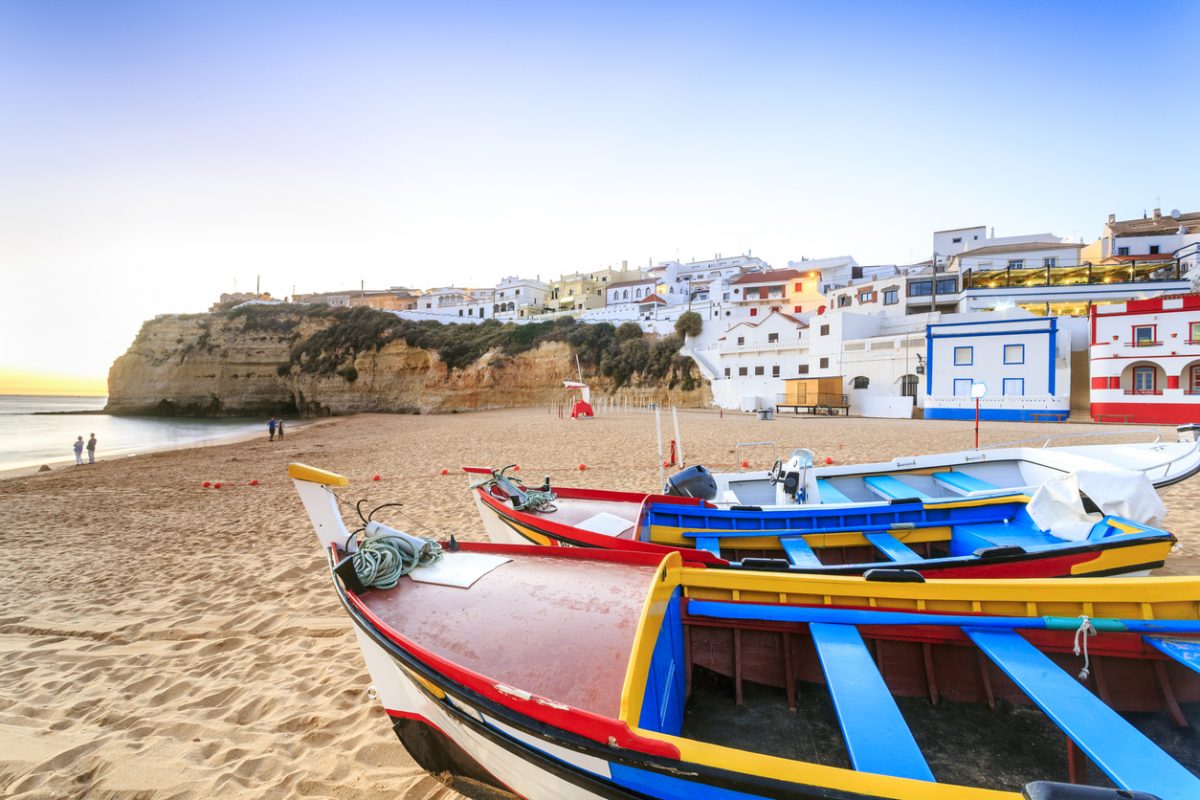
One of the most popular sites in the Algarve is Benagil cave. Known as Algar de Benagil in Portuguese, this geological marvel has a distinctive hole in its roof through which light enters.
This spectacular sea cave is located between two beaches, Praia de Benagil and Praia da Marinha.
Kayak and boat tours to the cave depart from Carvoeiro Beach and several other destinations around the Algarve.
Dolphin-watching tours are another popular activity in the Algarve and depart from beach towns like Lagos, Albufeira and Vilamoura.
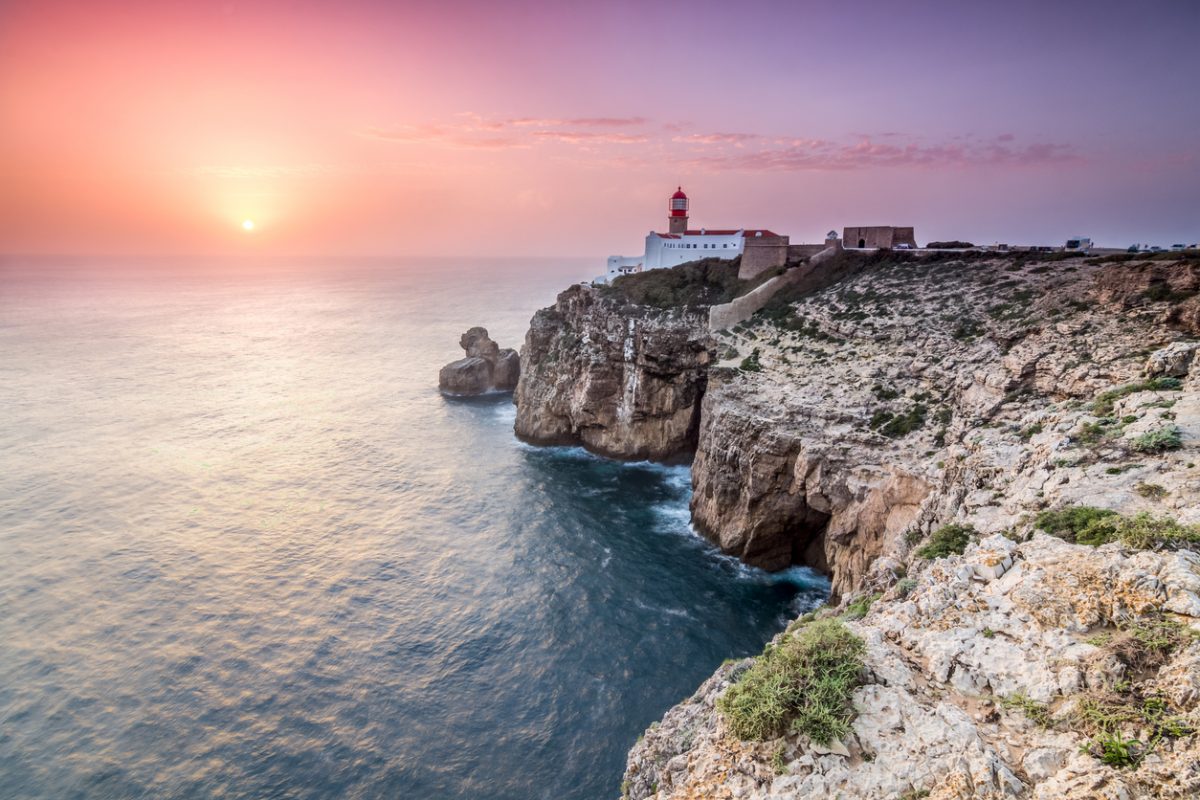
Where to stay
Lagos is a beautiful town in the Algarve, a fantastic place to stay with amazing beaches, a busy old town, and a beautiful marina.
The hotel Tivoli Lagos has Algarve-themed décor and ambiance and a central location close to the beach.
By Campbell from The Algarve Family
Seville, Spain
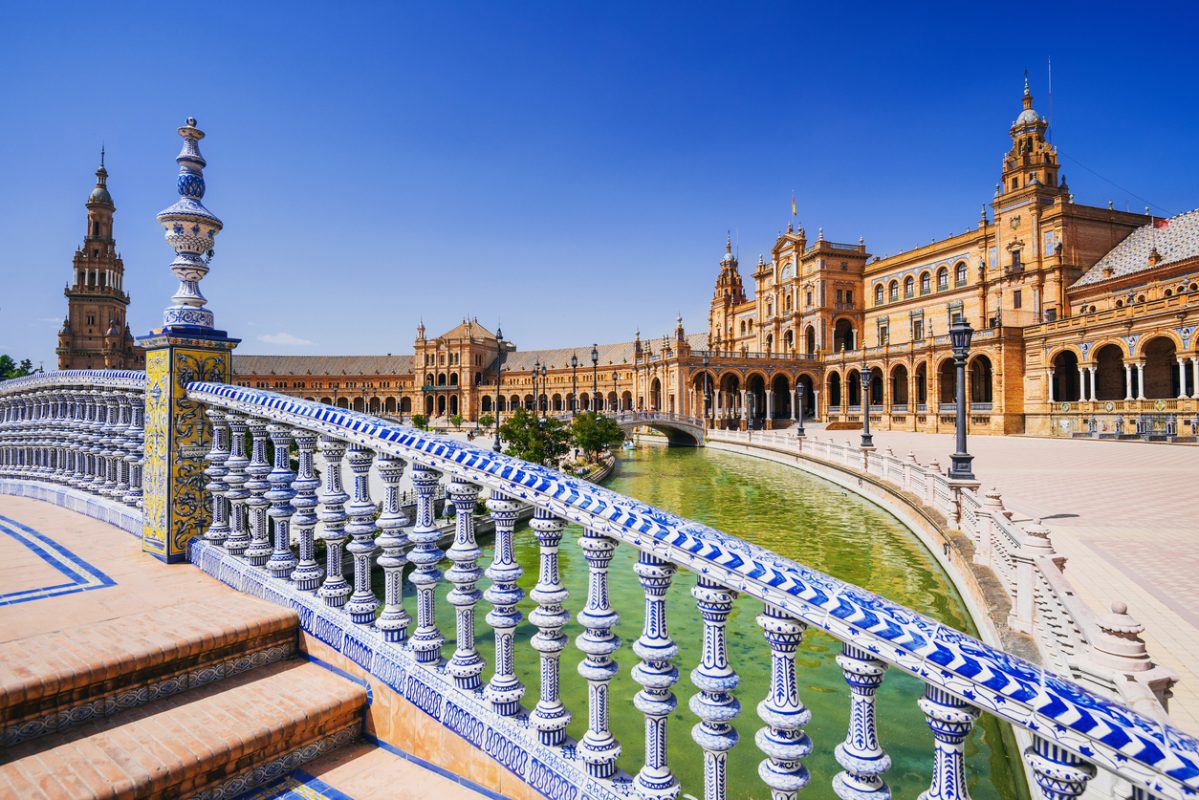
Seville is one of the most alluring cities in Spain, with a compact size, glorious year-round sunshine, and a UNESCO-listed historical center.
Whatever time of year you visit, you’ll find an abundance of things to do in Seville.
March is one of the best times to visit the city, as the temperature is pleasant, usually sitting in the low 20ºCs/ late 60ºFs – although it often feels even warmer than that thanks to the clear blue skies.
Seville is famous for its oranges and depending on when in March you visit, you might experience the fragrance of the orange blossom on the streets!
There are a few unmissable things to see in the city, including the Seville Cathedral & Giralda, Alcazar and the iconic Plaza de Espana. These are open all year round.

Semana Santa, or Holy Week usually falls in March and brings thousands of tourists to the city. It happens at around Easter, so the dates so vary slightly each year.
This is an annual tribute to the Passion of Jesus Christ and Seville plays host to one of the largest parades in Spain.
It takes place during the last week of Lent when the streets are filled with parades featuring hooded Catholic religious brotherhoods who carry enormous statues on a route around the city and thousands of onlookers.
Expect prices for hotels to skyrocket during this week – so book early!
Where to stay
The best places to stay in Seville are in the Historical Centre, so you’re in the heart of the action, or around the Alameda district where the hub of social life happens.
The Corner House is a rustic yet modern hotel with gorgeously decorated rooms and a rooftop bar with epic views over the city.
By Becki from Meet Me In Departures
Dubrovnik, Croatia

The historic city of Dubrovnik in Croatia is an ideal shoulder season destination.
The so-called “Pearl of the Adriatic” has a lot to offer even in the off-season – there’s the famous historic old town to explore, beautiful nature and gorgeous coastline to visit!
And all this is less crowded and much cheaper than in the summer months.
There are a few epic things to do in Dubrovnik and the weather is pleasant. Spring is starting, and you can expect a lot of sunshine!
You have to see the historic Old Town, which has been on the UNESCO World Heritage List since 1979 and attracts visitors with many interesting sights and museums.
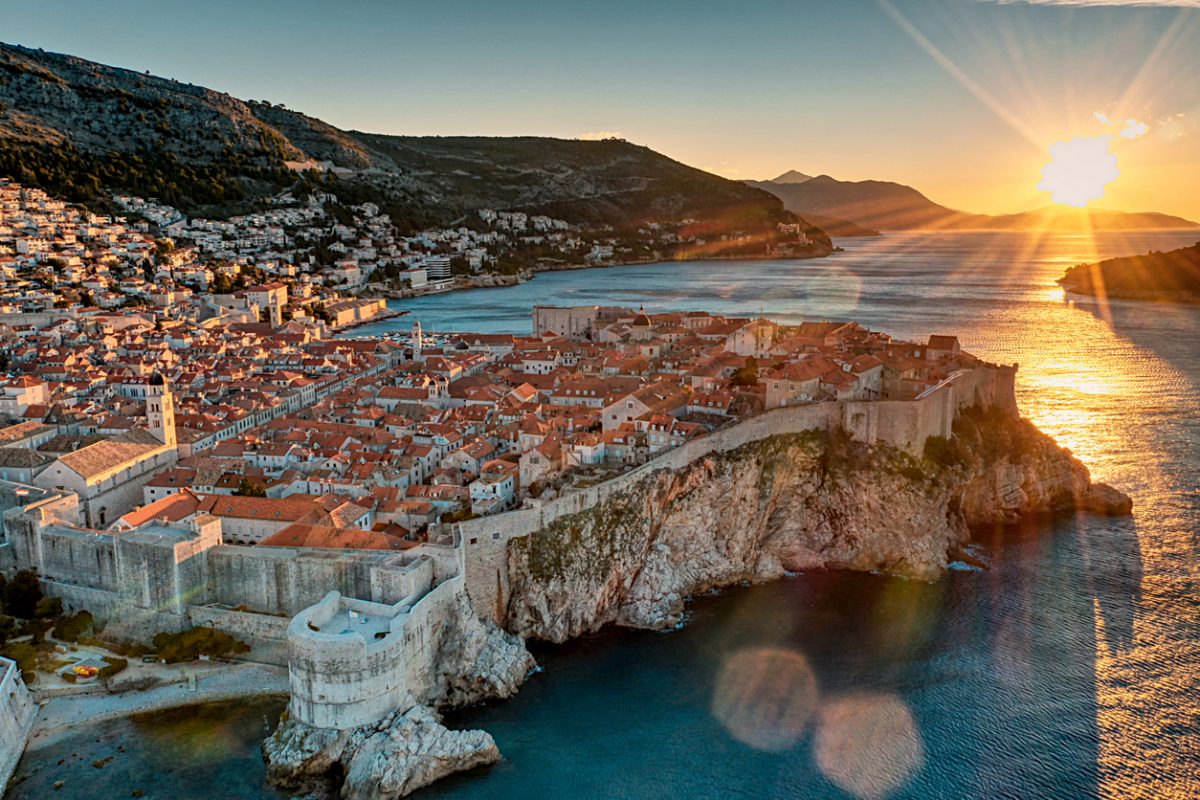
Walking city wall of Dubrovnik is a must – it even offers cheaper entrance fees in March.
Here, you can circle the entire city center on a length of about two kilometers and experience a breathtaking view over the red roofs and sea.
Riding on the Dubrovnik cable car is another highlight. From it, you can enjoy a beautiful view of the Dubrovnik Riviera.
The coast around Dubrovnik is also stunning, the water is wonderfully clear and shines in the most spectacular colors.
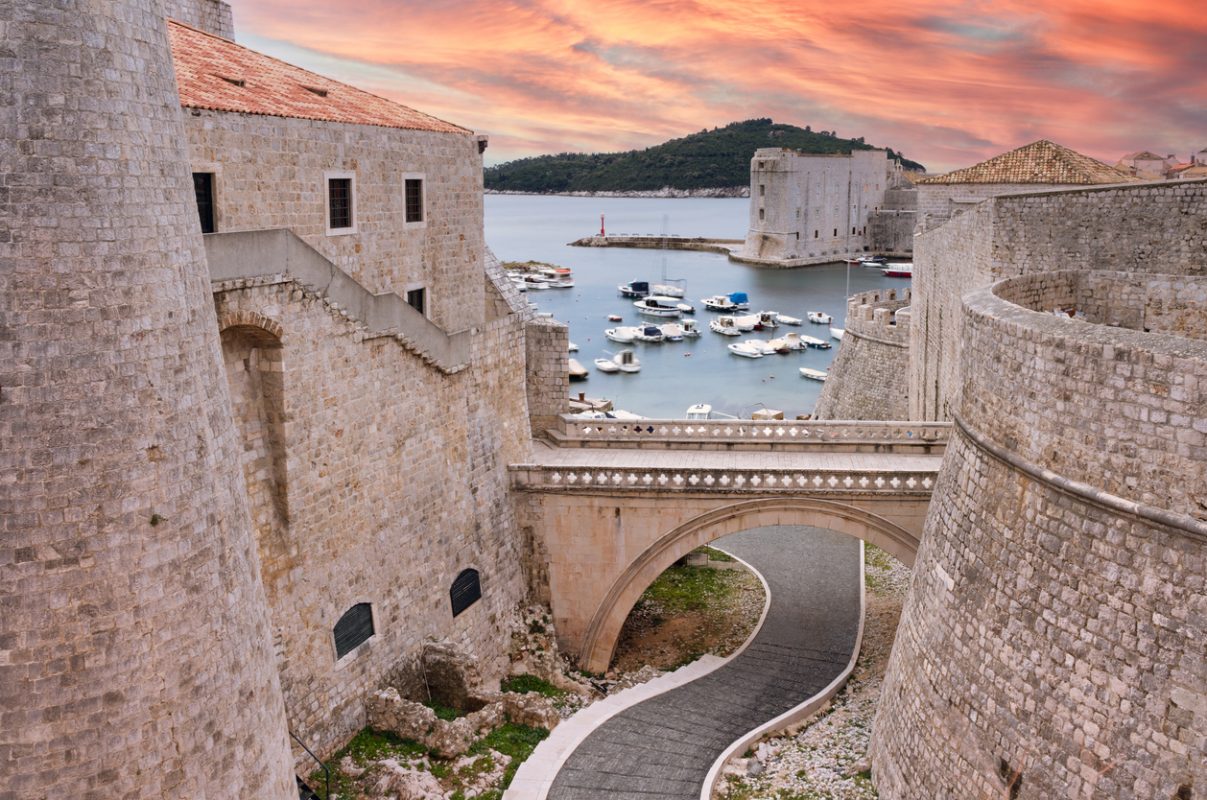
Here you can take fabulous walks and in good weather even paddle down the coast by boat or kayak.
You’ll discover beautiful sea caves and hidden bays and islands like Lokrum, Lovran, Korcula or Mlijet.
Where to stay
The gorgeous Villa Orabelle has stunning views over the city and beautiful modern rooms.
By Martina from PlacesofJuma
Cyprus
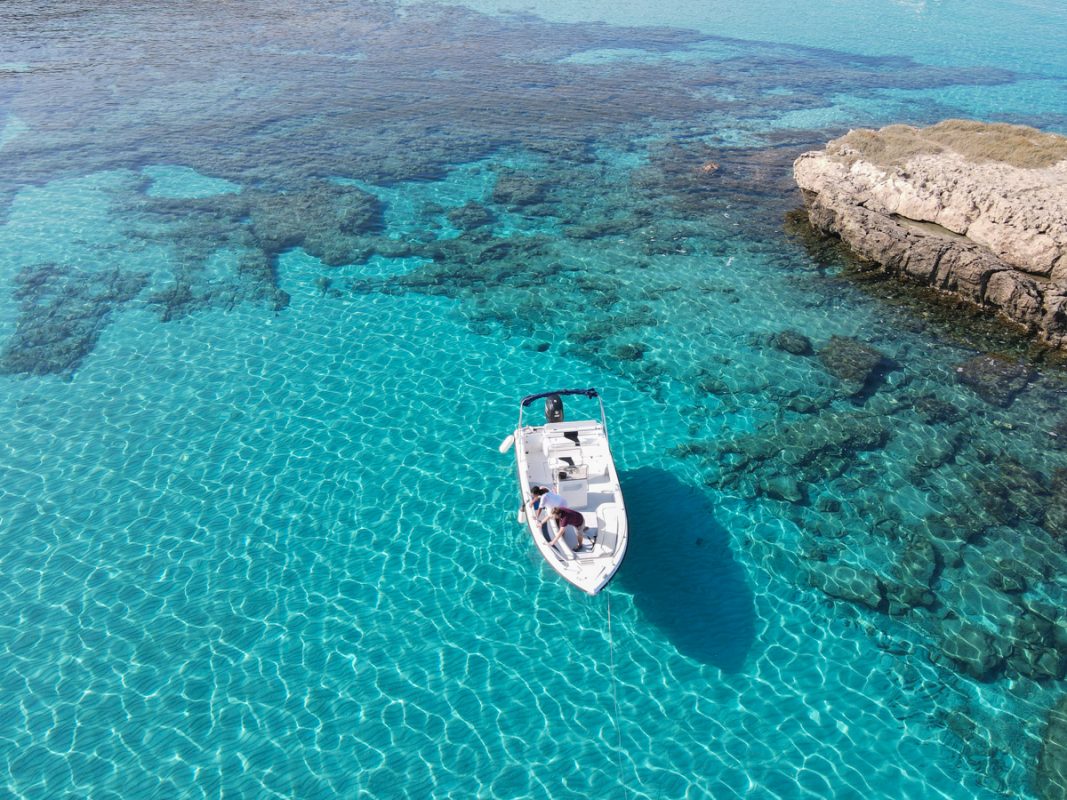
For a fantastic March getaway, choose Cyprus!
It’s a unique destination in March because you can enjoy warm daytime temperatures in the coastal towns, but if you fancy a little bit of a change you can still go up to the mountains for ski season!
If you’re looking for a bit of winter sun, head to Paphos, Limassol or Larnaca.
It’s a quiet time as most tourists prefer the burning heat of the summer, but it will likely be around 20°C/ 68°F – certainly warm enough for hiking, walking and shopping!
One of the best things to do near Paphos is to hire a boat and visit the Blue Lagoon.
You can spend the day relaxing and floating on the crystal clear water, plus you get to actually drive the boat!
On the east of Cyprus lies Larnaca, a busy tourist town with popular beaches, restaurants and bars that are beginning to open up in March.
However, if you’d prefer to see snow then head up Mount Olympus in the Troodos Mountains (around an hour’s drive from Paphos) and stay in the ski resort there.
There’s a ski school, two hotels and plenty of restaurants in the resort so you’ll never run out of things to do!
Where to stay
In Lanarca, the Sun Hall Hotel is a great option for central accommodation with breakfast included.
By Jade from Two Tall Travellers
Malaga, Spain

The coastal city of Malaga, located in the south of Spain, is one of the best destinations to visit in late winter/ early spring.
With an average of 19°C/ 66°F and blue skies, its warm but not too warm temperatures make it an excellent place for a wide range of activities – from sightseeing to tackling scenic hiking trails!
By visiting Malaga in March, you’ll avoid the crowds and extreme heat that are synonymous with the summer months here. Also, your holiday will likely be much cheaper!
Some of the must-see attractions in Malaga include Alcazaba de Malaga, a beautiful Moorish fortress with breathtaking views of the city, Malaga Cathedral and the famous Picasso Museum.
However, because of the beautiful weather, you could also take it easy and relax at La Malagueta Beach or enjoy a few tapas and traditional dishes alfresco. El Pimpi Bodega Bar is one of the best places to do so!
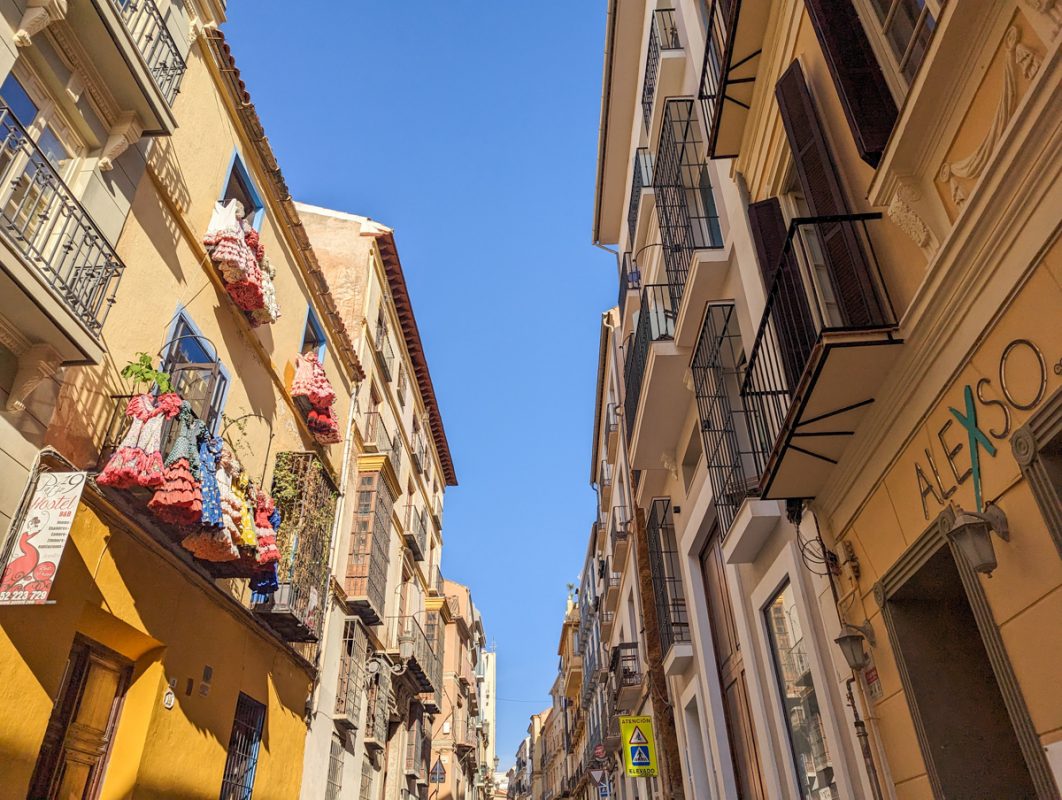
Malaga is also surrounded by pretty whitewashed towns, fantastic hiking trails, and other popular Andalusian destinations, so it is worth going on a day trip to places like Frigiliana, Ronda and Granada.
If you visit Malaga at the end of March, you might want to extend your trip until the beginning of April to enjoy “Semana Santa” (Holy Week), one of the most unique events in the city. This is a busier (and more expensive!) time than the rest of March, but the parade and cultural activities are fantastic.
Where to stay
For a central stay, Room Mate Valeria is an excellent choice. This boutique hotel has lovely rooms and a chic rooftop terrace with a pool.
By Cristina of My Little World of Travelling
Sicily, Italy

March is a wonderful time to visit Sicily.
You’ll be rewarded with gorgeous sunny days, mild temperatures, fewer tourists, fantastic hotel accommodations and car hire deals, and some of the best food on the planet.
Sicily is home to an abundance of UNESCO world heritage sites, ancient temples, Greek amphitheaters, Roman villas and the stunning Aeolian Islands.
With a car, you’ll be able to explore the island and the many historic sites at leisure.
Visit the Valley of the Temples in Agrigento, take a hike to the top of Mount Etna, go shopping in Taormina, learn about the Mafia in Palermo, or explore the stunning Baroque towns around Ragusa.
Don’t fancy driving? Stay on the east coast, where it’s easy to explore the different towns by train.
Traveling by train in Sicily is easy, cheap and a fun way to explore.
Where to stay
Great places to stay on the east coast are Catania, a little bit rough around the edges but with plenty of charm; Taormina, more touristy but classier; or the stunning Ortigia Island, connected to the mainland by a short bridge.
B&B Palazzo Cerami is a beautiful boutique hotel in the heart of Catania’s historic center.
By Sarah from Life Part 2 and Beyond
Azores, Portugal

The Portuguese paradise of the Azores is a perfect March getaway.
If it’s your first time, São Miguel, the biggest island, is perfect.
Here you’ll find some of the most beautiful lagoons of the archipelago, trails in biodiverse forests, steaming volcanic natural hot springs to relax, breathtaking viewpoints, and a cup of tea to taste in one of the few tea plantations in Europe!
A particular curiosity about exploring these islands in the middle of the Atlantic Ocean is that you’ll get to experience the four seasons in a matter of hours, depending on where you’re on the island.
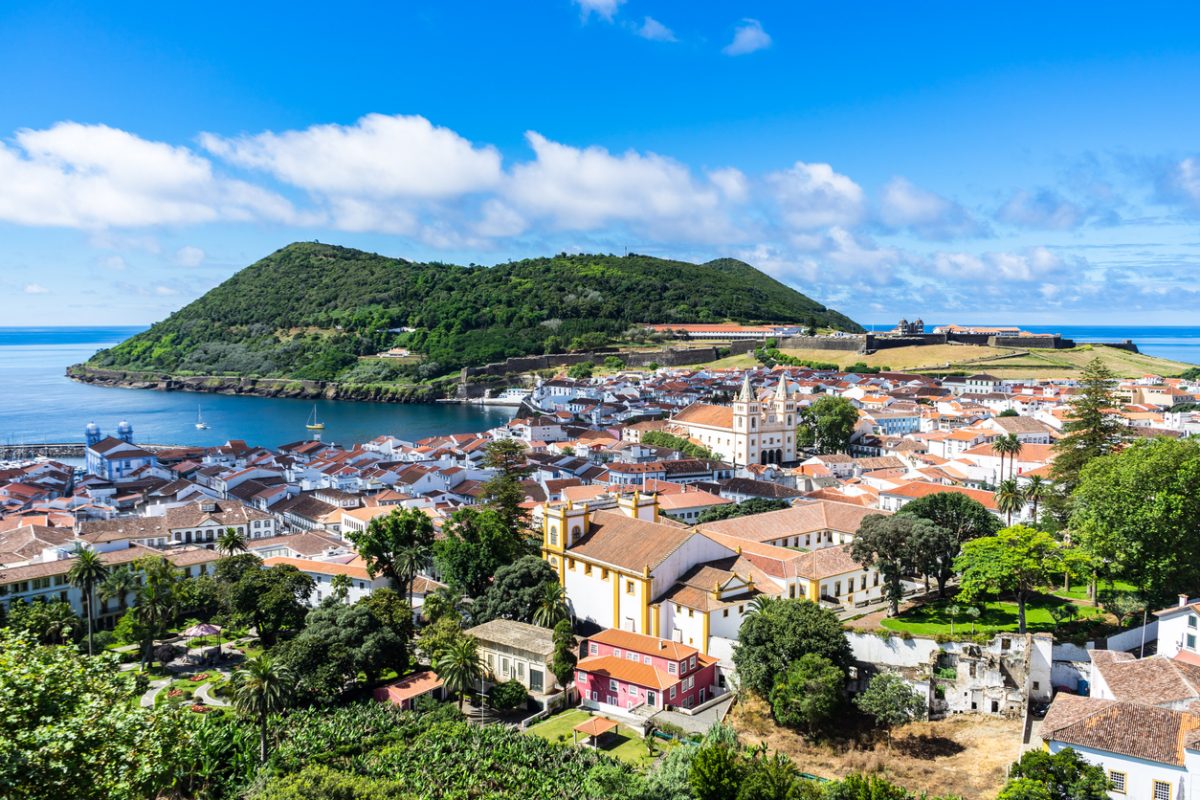
This means that you may need a thick coat when hiking in the north of the island and a bathing suit on the south, on the same day!
March is a perfect month to plan a visit to the Azores since the weather is perfect (it’s never too cold in the Azores) you’ll get fewer people in the main attractions and cheaper prices in accommodations and car rental compared to peak season.
Where to stay
There are incredible accommodations throughout the archipelago but if you decide to start your Azores trip on the main island, São Miguel, don’t miss the experience of sleeping in a mill overlooking the Atlantic Ocean in Moinho das Feteiras.
By Inês from Randomtrip.net
Best city breaks in Europe in March
The slightly warmer temperatures in March compared to other months means that these city breaks can be a much milder and more pleasant experience.
Plus, you’ll find lots of festivals and events throughout the season, including St Patrick’s Day in Dublin and Las Fallas in Valencia, along with beautiful spring flowers.
Dublin, Ireland

One of the best places to visit in Europe in March is the vibrant city of Dublin, Ireland.
Dublin’s magic comes out in full force at the beginning of the month and lasts throughout. All around the city, you’ll find signs of Irish pride and history.
Celebrating St. Patrick’s Day in Dublin is truly a bucket list experience. It’s unlike anywhere else in the world. It’s not simply a drinking holiday, but rather a celebration of the patron saint of Ireland.
The celebrations start a week ahead of time and culminate in a parade on the 17th.
In the city, you’ll find plenty of restaurants featuring traditional Irish food with live music and even potentially Irish step-dancing groups.
Be sure to pack plenty of green for the celebration so the leprechauns don’t see you (locals may pinch you if you’re not wearing any green!).
If you’re visiting later in the month, there are still plenty of things to do in Dublin in March.
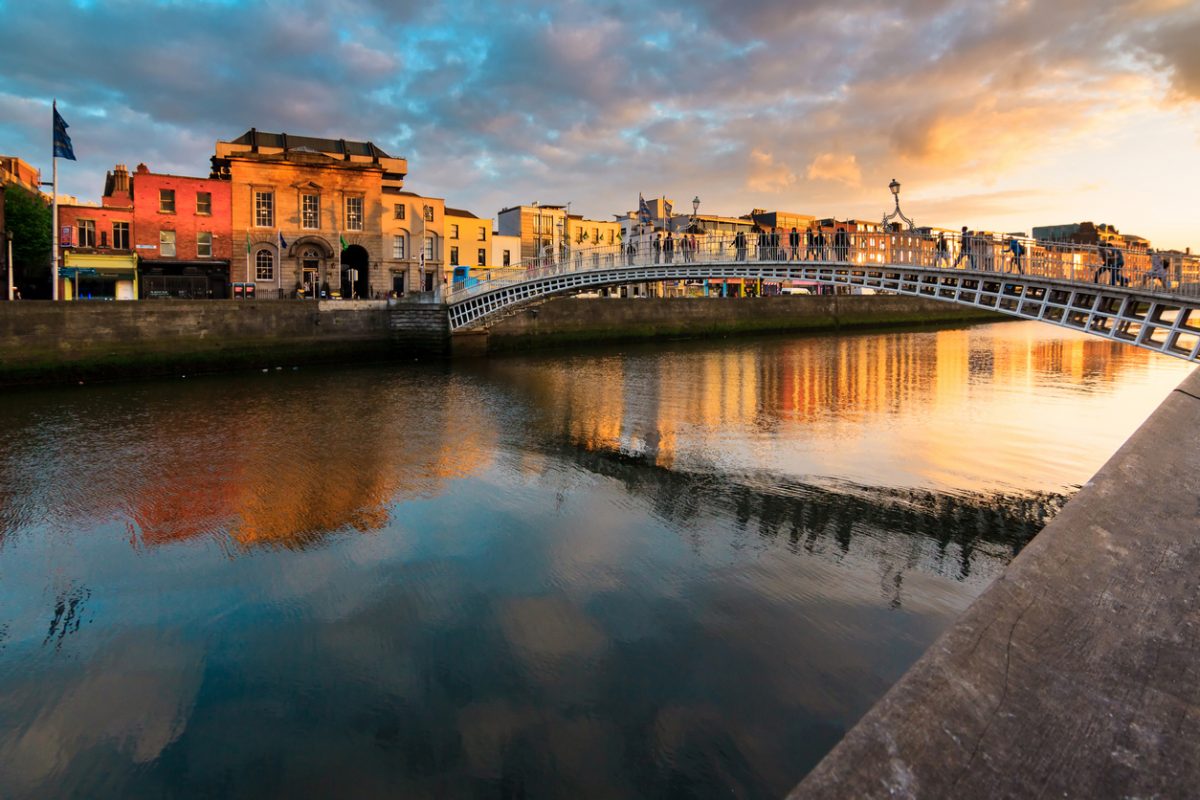
Take a cruise on the River Liffey to get a new view of the city, enjoy a tour of the Guinness Storehouse, or walk through history at Dublin castle.
While the weather is a little chilly in March, snow and freezing conditions are rare – so pack a jacket and get out and explore this incredible city!
Where to stay
Pembroke Townhouse is a stylish and comfortable hotel located in a historic building, with cosy beds and rooms with swanky bathrooms with roll-top baths.
By Pam from The Directionally Challenged Traveler
Belgrade, Serbia
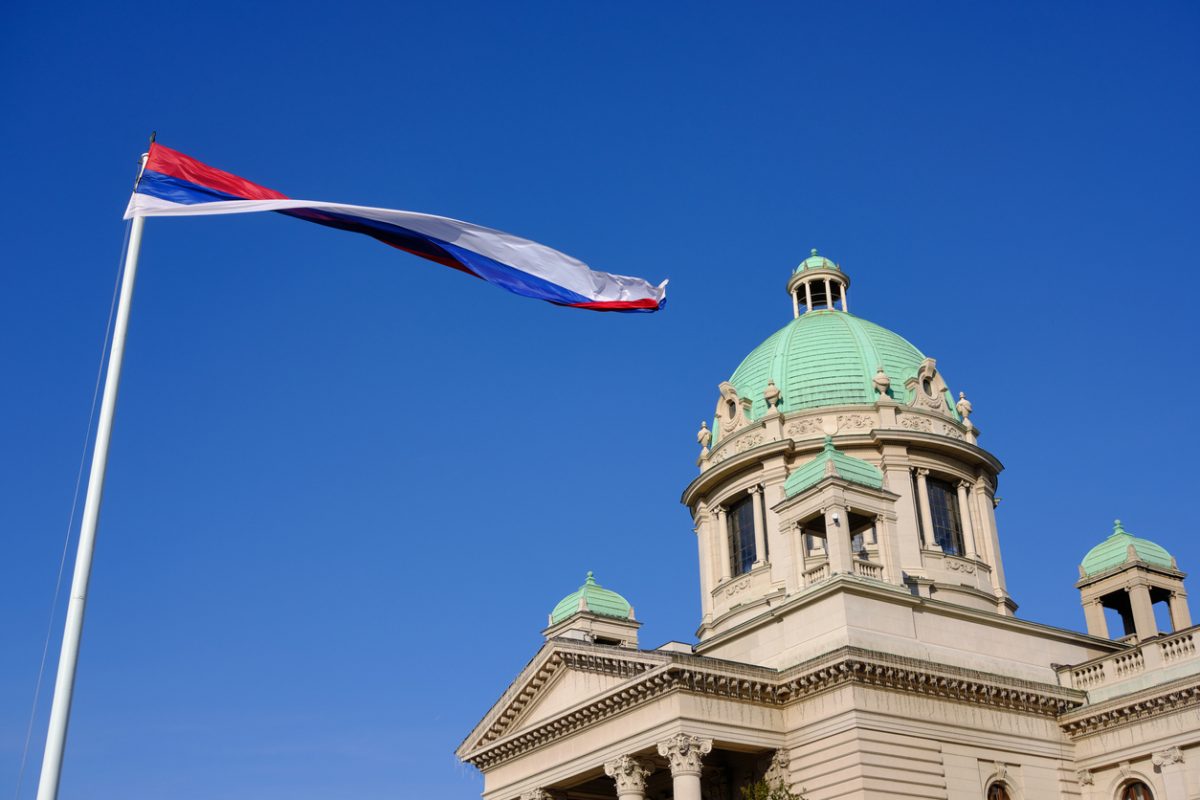
Belgrade is the perfect place to visit in March.
The temperatures are pleasant, unlike the sweltering summer months, and there’s a vibrant atmosphere in the air as the city starts to come to life again after the bitterly cold winter.
There aren’t many tourists in Belgrade in March, so you can enjoy the city without the crowds. Plus there are several festivals that happen in March including the FEST International Film Festival.
One day in Belgrade is enough to see attractions like the impressive St Sava Cathedral – the Balkan’s largest Orthodox Cathedral and the stunning Old Palace and New Palace (Stari Dvor and Novi Dvor).
Knez Mihaila is Belgrade’s main pedestrianised street.
It runs through the heart of the Old Town and there are many restaurants with outdoor areas where you can go for lunch or a coffee.
Also, head to the symbol of Belgrade – the historic Belgrade Fortress – to watch the sunset. The fortress is over 2000 years old and is an absolute must-see on a trip to the Serbian capital!

Where to stay
The Belgrade Art Hotel is a stunning stylish hotel situated in the old town, which is the perfect location to explore Belgrade on foot.
By Catrina from 24 Hours Layover
Bruges, Belgium

Known as the “Venice of the North”, Bruges in Belgium is fantastic in March, which is out of its peak season.
The city is significantly more crowded during the summer or winter seasons, so in March, you might be able to avoid the swarm of tourists.
If you want to get the most out of your trip to Bruges, you should definitely take a canal boat tour and check out the Historium Bruges. Also don’t miss out on climbing the Belfry for some glorious views and enjoying the quietness of the Beguinage.
Belgium is known for its delicious chocolates and waffles, both of which you can enjoy when you are tired of exploring the city. Make sure to also try the local ‘Brugse Zot’, one of Belgium’s many craft beers.
Don’t forget to bring layers that are not only warm and cozy but also comfortable so that you can stay warm while exploring. The weather in early spring can be great, but rainy days are more likely and even a little snow is possible.
Where to stay
Bruges is a compact walkable city, but it’s best to stay in the city centre.
Boutique hotel ‘t Fraeyhuis is located in the charming Minnewater Park and brings you classy rooms in a peaceful environment while still allowing you to walk everywhere.
By Babs from Next Stop Belgium
Valencia, Spain

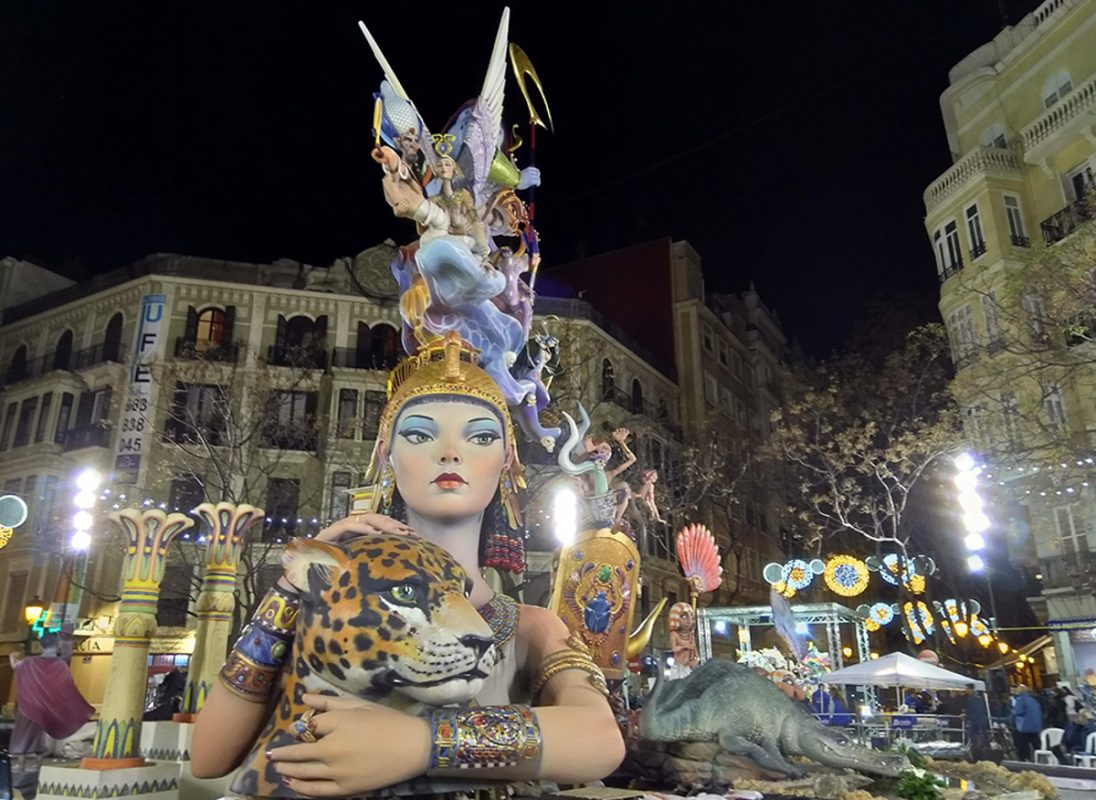
Valencia is a beautiful city on Spain’s Mediterranean coast that’s great to visit pretty much any time of year.
But, if you want a unique experience in Valencia, then visit the city between March 15th and March 19th, during the annual Las Fallas festival.
This festival is a traditional celebration held in commemoration of Saint Joseph. But it’s better described as a massive five-day-long street party in and around the city.
More than 700 enormous, largely paper-mâché statues or monuments that take a year to build are placed throughout the city and in neighboring towns.
From March 15th until the 19th you can admire these statues by walking around the city enjoying bands, DJs, street food, and firework displays.
This all ends with the main event on the evening of the 19th when they set all these statues on fire.
It’s a very traditional festival and nowadays attracts visitors from all over the world. So if you decide to visit Valencia during Las Fallas, book your flights and accommodation early.
If you have enough time in Valencia to see more than just the Fallas Festival, then do visit the impressive buildings of the City of Arts and Sciences.
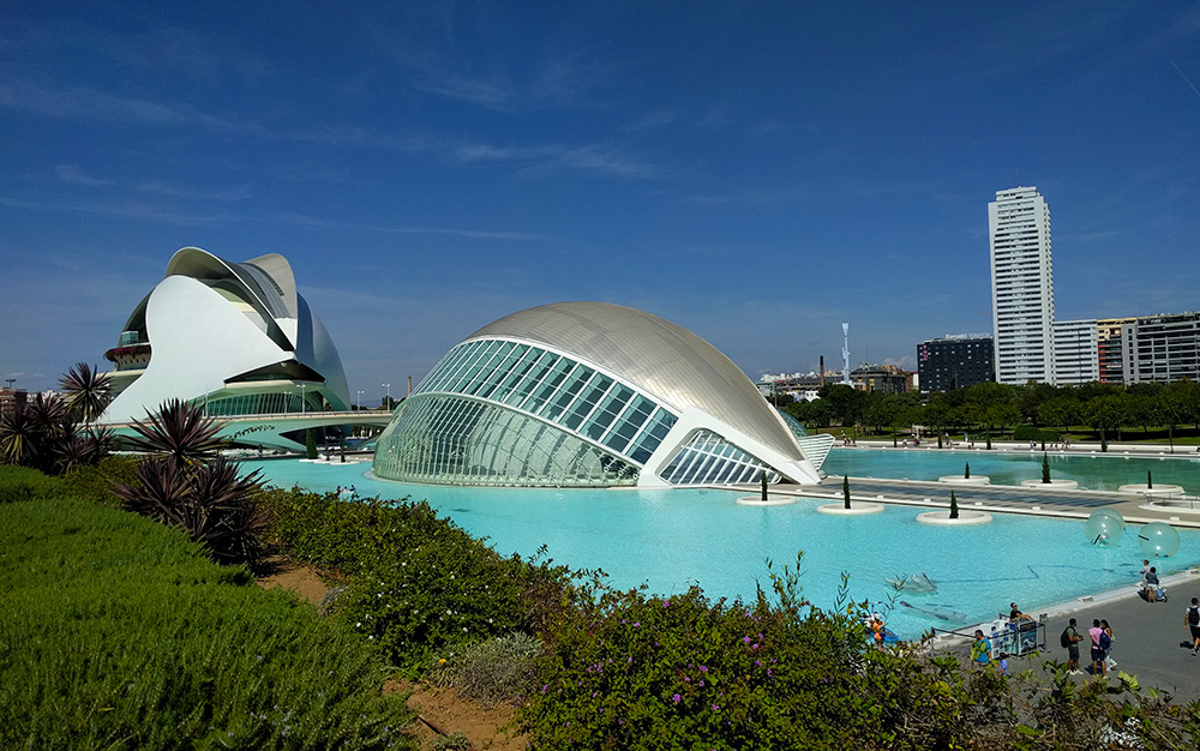
And, since Valencia is the birthplace of paella, do try authentic paella at least once!
Where to stay
Since public transport is limited and crowded around Las Fallas, it’s best to stay somewhere central so that you can walk around the city.
A good hotel to stay at in the center of Valencia is MYR Plaza Mercado. Just be prepared for the festival crowds and street parties!
By Sanne from Spend Life Traveling
Lisse, Netherlands

For the perfect European getaway in March, head over to Lisse, Netherlands to see the tulips in bloom!
Every year, beginning in mid-March, the Netherlands puts on a “show” with its colorful garden and fields of tulips in full bloom.
The place to visit for the most spectacular flower experience is in and around Keukenhof, which is also known as the garden of Europe. Getting there is simple: simply hop on one of the direct shuttles available from both Amsterdam’s airport and city center.
Spend your first day visiting the garden itself and exploring the 79 acres of flower fields and arrangements.
On the second day, rent a bike from the booth in the parking lot of Keukenhof and ride around the surrounding flower fields in the area.
Where to stay
The best place to stay while visiting Lisse is in Amsterdam.
For a competitively priced hotel in a great location consider staying at Nova Hotel & Apartments.
This hotel offers clean rooms in a location within walking distance of many of Amsterdam’s top sites to see. It’s also easily accessible by the shuttle that goes to Keukenhof.
By Chelsea from Adventures of Chels
Würzburg, Germany

Würzburg, Germany is a medium-sized city located in northern Bavaria.
Although Würzburg is a great destination all year long, March is a particularly pleasant time of the year to visit, as the weather warms up a little and it really starts to feel like spring.
The month of March is considered off-season, so visitors will get a sense of having the city to themselves to explore.
There will be little to no lines for historical attractions and trails along the Main River won’t be crowded outside of local foot traffic.
When visiting Würzburg, see the Residence, a UNESCO World Heritage Site with gorgeous gardens.
After a visit to the Residence, walk the Old Main Bridge to the Festung Marienberg, a large castle overlooking the city.
Since the castle is located on top of a hill, walking can be strenuous but thankfully, the cooler weather temperatures in March make the walk very doable.
Finally, catch some fresh air and enjoy nature while walking the several paved trails along the Main River.
Where to stay
Moxy Würzburg is a funky establishment with great amenities, reasonable prices, and is close to all the attractions and sites around Würzburg.
By Brandon from Zimmin Around the World
Lucca, Italy
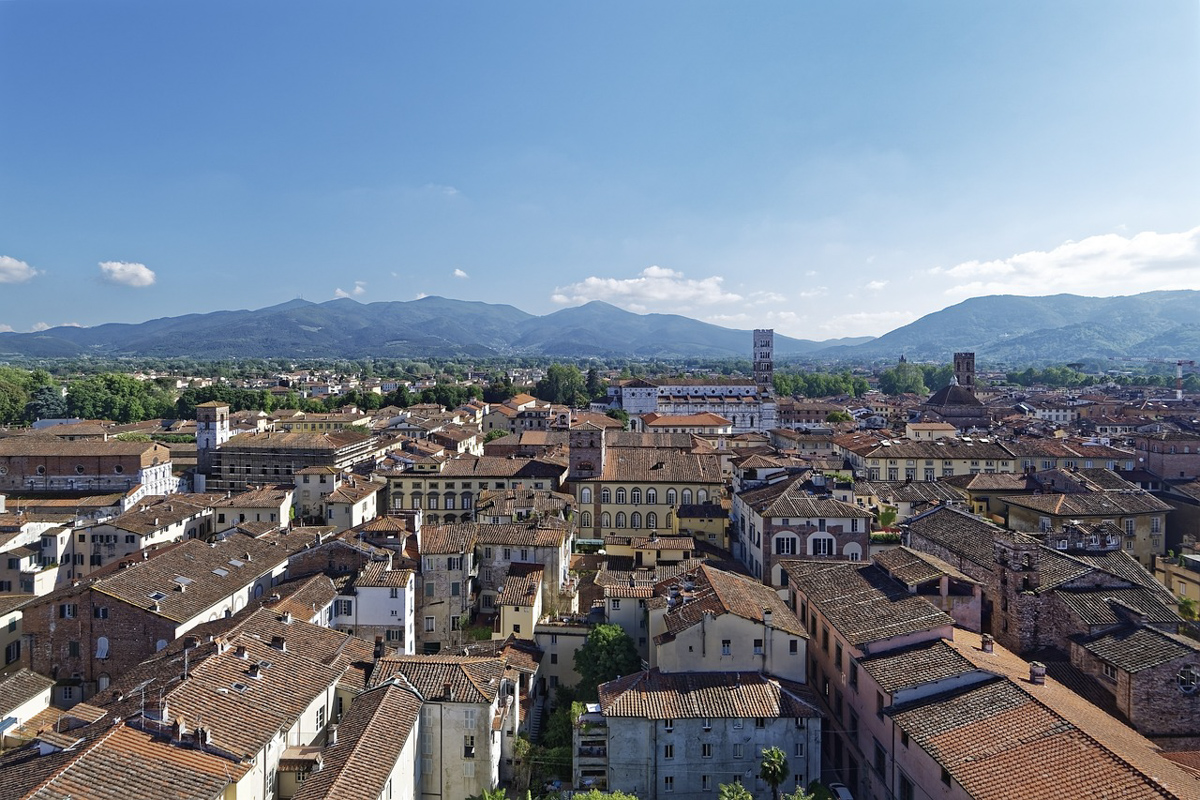
March is a great time to visit the Italian city of Lucca. This charming walled city has a unique history and plenty of attractions for any traveler who’s looking for an off-the-beaten-path experience in winter.
The weather in March is chilly, but not freezing, and toward the end of the month, you’ll even get some warm days.
Lucca is known for its walls, which were built originally in the 2nd century BCE and have been rebuilt several times.
The walls surround the entire old town and, from the top, provide visitors with stunning views of the city.
You can roam the walls or rent bikes and ride around the city.
Once you’ve finished exploring the walls themselves, wander around the walled city and explore the Piazza dell’Anfiteatro, where you can find ruins from an ancient Roman amphitheater, or climb up the Torre Guinigi, a tower that dates back to the 14th century.
Or visit San Michele in Foro Church which is one of Lucca’s oldest churches.
Lucca boasts a wide selection of restaurants serving up traditional Tuscan cuisine such as ribollita (a thick vegetable soup), pappa al pomodoro (bread tomato soup) and bistecca alla Fiorentina (grilled steak), fresh pastries, and coffee.
And don’t forget about gelato – this region is famous for it! The local flavors include limone and cioccolato fondente (dark chocolate).
The best thing about visiting Lucca in March is that you’re missing most of the Spring and Summer tourists that crowd the city during peak season.
You’ll feel like you have the city almost to yourself!
Where to stay
Hotel Ilaria is in the heart of the historic center and has stylish, bright rooms.
By Vanessa from I Heart Italy
Gothenberg, Sweden
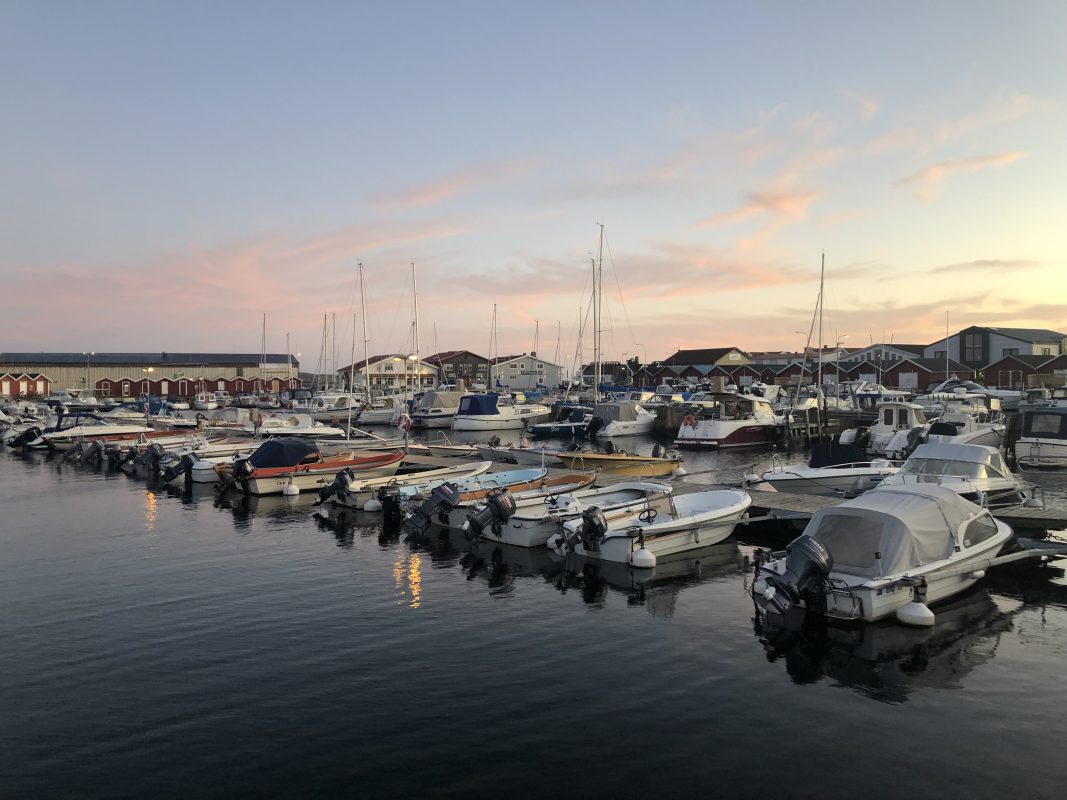
A medium-sized city in one of the most beautiful Nordic countries, Gothenburg is a hidden gem on Sweden’s southwestern coast.
Gothenberg has a serene feel to it, with trees lining the streets and the breeze of the sea in the air.
Many stores in the central part of the city are worth exploring, as art stores and unique shops fill the city center.
March is a great time to visit the city. It’s an off-season month and one of the least busy times of the year for tourism, allowing visitors to truly experience everyday life in this Nordic city without the inflow of tourists.
Gothenburg offers charming cobblestone streets lined with small cafes.
A well-known local dessert, the Hagabullen, is a popular treat at Cafe Husaren. The culinary scene in Gothenburg is fantastic, as much of the food, particularly seafood, is locally sourced.
Craft beer is also very popular in this city, as Gotheburg is one of the world’s top destinations for craft beer, with numerous beer tastings and workshops.
Gothenburg is also in a great location for fantastic day trips.
The Bohuslan archipelago is immediately west of Gothenburg and is made up of thousands of small islands, with many boats directly drive on, where cars can easily access lanes on the boat and be taken across many of the islands around Gothenburg.
Where to stay
There are several islands connected together that are worth island hopping, including the island of Hono as well as the islands directly north, with easy hiking and exploring.
Accommodations in Gothenberg are relatively budget-friendly in March, especially the cosy yet elegant Hotel Pigalle.
By Diana from Travels in Poland
Brno, Czechia

The second-largest city in the Czech Republic, Brno is the ideal destination for a city break any time of the year.
However, March is one of the best months to plan a trip to Brno for several reasons.
First of all, the weather in March is usually quite cold yet dry – so you shouldn’t be spending your entire time under an umbrella!
Moreover, March is the low season in Brno, which means that accommodation prices drop and you’ll share the city mostly with locals.
A lively university city of diverse architecture and easy-going vibes, Brno has no shortage of amazing things to see and do, such as descending to the depths of the Brno Ossuary and the 10-Z Bunker, wandering around Spilberk Castle and finding out the secret of the city’s Astronomical Clock.
Where to stay
Brno is a very compact, flat and walkable city. Most of Brno’s hotels are located in or around the city centre, only a short walk or tram ride from any point of interest.
One of the best accommodation options in Brno is Hotel Passage, a charming hotel housed in a completely renovated and re-designed building that dates back to 1928.
By Maria & Katerina of It’s All Trip To Me
Veliko Tarnovo

The medieval capital of Veliko Tarnovo in North-central Bulgaria is known for its picturesque old town, historical architecture and stunning nature that surrounds the city.
A must-visit on any tour of Bulgaria, the snowy winter season turns Veliko Tarnovo’s beauty into the spectacular. Since the weather can hit some bitterly cold temperatures, March is a great time to visit Veliko Tarnovo for less-crowded attractions; there’s still a chance of snow but spring is on the horizon!
Wander the streets of the cultural old town and follow the ancient cobbled streets to the popular and fairytale-like Tsaravets Fortress.
You can also join a delicious Bulgarian wine tour or take part in one of the many winter sports including snowboarding and skiing at nature resorts surrounding the city.
From snow-dusted fortresses to sipping Bulgarian wine at one of the many lively bars and Tavernas, Veliko Tarnovo is a majestic and unique winter wonderland.
Where to stay
I had a particularly good time staying at the Hostel Mostel in March 2022, a mid-range, friendly and clean hostel a 10 minute walk from the historical centre.
The city provides a range of luxury and budget accommodation from hostels to traditional guesthouses.
By Sophia from Beauty in a Backpack
Best cold-weather destinations in March
Fancy something frostier? It’s still possible to enjoy cold weather in March in northern and mountainous Europe.
Whether you want to take to the slopes at the end of the ski season or enjoy activities like chasing the northern lights (which are much more active in the winter months), check out these cold-weather destinations!
Lucerne, Switzerland
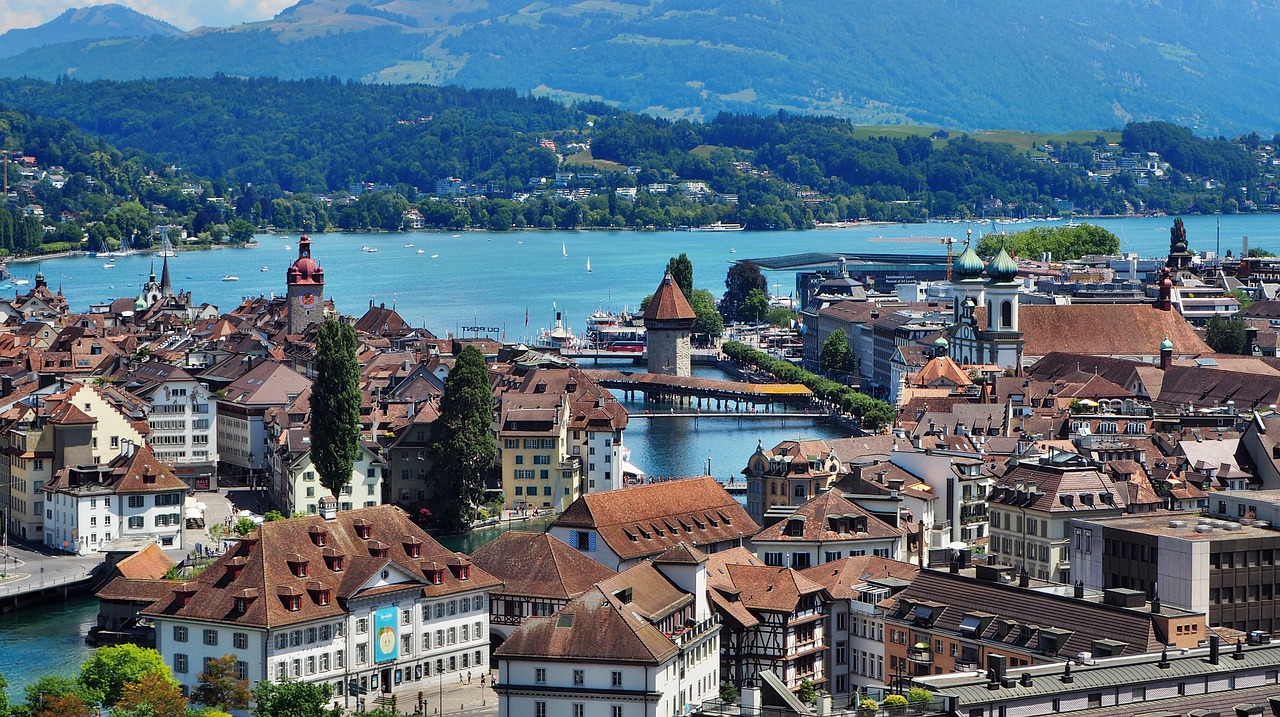
With medieval architecture lining cobbled streets combined with stunning natural scenery and even legends of a mountain dragon, the charming city of Lucerne is a perfect place in Europe to visit in March and a must for any itinerary for Switzerland.
A winter wonderland awaits during March, creating its own magic for skiers and non-skiers.
The biggest benefit of visiting during this month (outside of Easter dates) is fewer tourists in the Old Town, as the ski fields see the majority of visitors.
Enjoy little boutiques, countless cafes, and beautiful hand-painted façades from the Middle Ages whilst forgoing the crowds.
A trip to Lucerne isn’t complete without a visit to nearby Mt Pilatus.
It’s a breathtaking experience witnessing the green mountainside gradually transition into greyscale from the cable car whilst riding to the summit.
On a clear day, prepare to be blown away by the view to the horizon, and why not indulge in a hot chocolate or meal at the cafe whilst you’re there?
Be mindful if you’re renting a car in Switzerland in March; the roads can still be icy in this month, as the country gradually thaws as it approaches spring.
Where to stay
It’s possible to stay at the summit of Mt Pilatus itself, however for those who prefer to explore the Old Town on foot, stay at Hotel des Balances, which is centrally located.
By Alyse from The Invisible Tourist
Valle Thorens, France

One of the best places to ski and snowboard in Europe in March is Val Thorens in France.
Not only because it’s one of the most beautiful mountain ranges but also because it’s the highest ski resort in Europe (at 2300 meters).
This means that you will still find good-quality snow by the end of March, making it one of the best resorts for the end of the season.
Besides that, Val Thorens is also one of the largest ski resorts in France with no less than 600 km (!) of slopes.
And towards the end of March, most of the crowds have already left, which leaves the slopes just for you to discover. And it also leaves you with lower prices for ski passes and accommodation!
Despite the lack of crowds, Val Thorens is still filled with a great atmosphere for those who visit in March.
From dance parties at 360 Bar or Folie Douce to cozy French restaurants, there is something for everyone.
If you’re not into skiing or snowboarding, the guaranteed snow and lower prices also make March a great time for other winter activities such as ice driving, snowshoeing, ice diving, and tobogganing.
Where to stay
Check out Hotel Marielle for a beautiful place to stay right on the slopes.
By Lara from The Best Travel Gifts
Faroe Islands, Denmark

The Faroe Islands are a fantastic place to explore if you’re looking for an adventure.
Right on the edge between winter and spring, March is a great time to enjoy the untamed beauty of the islands. It’s still cold, although the temperature usually hovers above freezing.
You’ll see snow in the mountains and possibly at lower elevations, but the days are getting longer, with over 10 hours of daylight.
March is still considered the low season (and visiting during quiet season is one of the best Faroe Islands travel tips!), so you’ll enjoy few crowds and low prices at this time of the year.
With 18 main islands and hundreds of small ones, there is plenty to explore. Some of the best-loved islands include Vagar, Streymoy, and Kalsoy.
While all have incredible scenery, Vagar has some breathtaking waterfalls, including the famous Mulafossur waterfall. Streymoy island is home to the capital, Torshavn.
The picturesque village of Saksun, with its gorgeous black-sand lagoon, is also located on Streymoy.
Kalsoy boasts a gorgeous lighthouse and a fantastic hike.
Whichever islands you venture to, you are sure to have stunning views of dramatic cliffs, churning seas, jaw-dropping waterfalls, and iconic animals such as sheep and birds.
Where to stay
If you want to wake up to unparalleled views of a gorgeous bay, check out The View accommodations in Bour on Vagar Island.
By Megan from Megan Starr
Sierra Nevada

The Sierra Nevada in southern Spain is one of the best places to visit in Europe in March.
One of the most popular day trips from Granada and Malaga, the Sierra Nevada is Europe’s southernmost skiing resort with a long season lasting until April.
The slopes go down the second highest peak in Sierra Nevada, Pico Veleta, at 3394 meters of altitude. If you are new to skiing or snowboarding, you can rent gear and take classes as there are experienced instructors for adults and kids alike.
Slopes range from short and easy for beginners to steep and advanced for experienced riders.
For the youngest, there are small slopes straight from the village where you can go sledding for free. The village is at 2100 meters of altitude, so you might experience snowfall even in March, though chances are that it’ll be a bit warmer in the village itself.
That said, the slopes are always snowy until the season ends, so you can easily take the lift up to a white winter wonderland!
Where to stay
But the village at the foot of the skiing slopes is super charming and has everything you want from a ski resort.
There are a lot of hotels and apartments for rent so you can easily spend a few days. A good option is Hotel Maribel right next to the ski lift.
By Linn from Amused by Andalucia
Reykjavik, Iceland

The capital city of Iceland, Reykjavik is beautiful throughout the seasons.
I visited in January and loved it, but my partner has been in March and accredits it as a great time to see the country because you have a fairly high chance of seeing both the northern lights and plenty of whales.
You might still experience some snow in Iceland in March – the average temperatures usually hover between 4°C / -2°C (39°F/ 28°F) in Reykjavik – but it’s a lot warmer than in other winter months (when I was in Iceland in January it got down to -18°C or -0.4°F in Thingvellir National Park!).
Generally, it’s more comfortable to drive around the highlights of the Golden Circle; the roads might still be a bit icy, but they’re kept in good condition and you’re less likely to have changeable weather with blizzards in March.
Extra daylight hours are also a huge bonus, with the sun rising at about 7:45 am and setting at around 7:30 pm in mid-March. This means more daylight to enjoy day trips from Reykjavik and more of a chance to see the Blue Lagoon in daylight!
However, this does mean that northern light sightings are slightly less likely in March than in the darker months of November, December, January, and February.
I personally loved the late-morning sunrises and freezing weather of Iceland in January, but I know that that’s not for everybody – so March is a great compromise that’ll enable you to see the highlights of the country while enjoying more daylight and warmer temperatures!
Where to stay
I stayed at the Reykjavik Lights Hotel, which has comfy, minimalist rooms that are heated perfectly in cooler weather and a fantastic breakfast buffet.
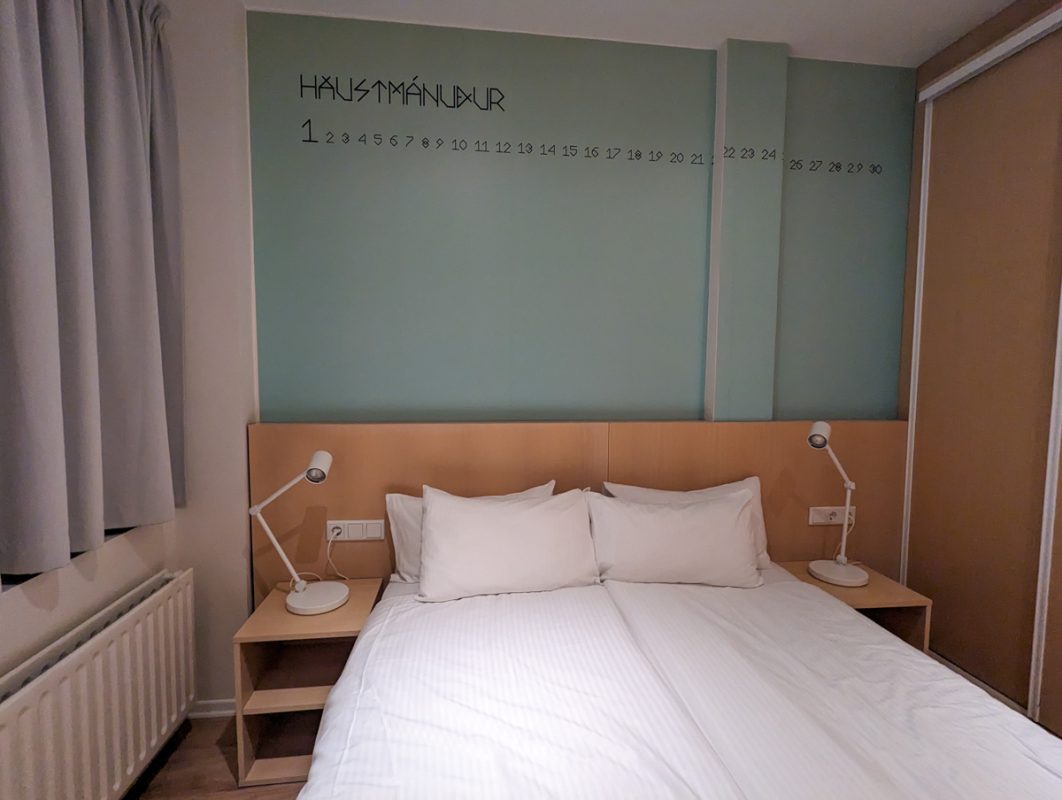
FAQs about visiting Europe in March
Is March good to visit Europe?
March is the perfect time to visit Europe to enjoy some warmer weather than the winter, although it is still snowy in some of the northern and more mountainous areas. Plus, museums and attractions are generally open throughout the continent.
Where in Europe is the warmest in March?
Southern Europe, in particular South Spain, Italy, Greece and Mediterranean islands like Cyprus and Malta are generally the warmest places in Europe in March; you can relax in the sunshine or go hiking, but the sea water is still a little bit chilly.
Is Greece hot in March?
Greece is generally one of the warmest European destinations, and it has mild Marches, with average temperatures of around 16°C/ 61°F in the southern part of the country. Northern Greece can be colder, especially in the mountains, where there are ski resorts.
What is the cheapest month to visit Europe?
March is one of the cheapest months to visit Europe, as it’s out of tourist season for both the summer and the busy Christmas period. You might find that accommodation, tours and even restaurants are cheaper in this lower season.
What beaches in Europe are warm in March?
The beaches in Southern Spain, particularly on the Costa del Sol and the beaches on Mediterranean islands like the Balearics, Malta, Cyprus, Sardinia and Corsica are all quite warm in March, although the Mediterranean sea can still be quite chilly.
Where is the best place to go for warm weather in March?
The best places in Europe to go for warmer weather in March are Andalucia in Southern Spain (cities like Malaga and Marbella), Sicily, the Canary Islands like Tenerife, the Balearic Islands, Greece, Mediterranean Turkey and even the south coast of France.
Where can you hike in Europe in March?
March is a great time for hiking in Europe, particularly in the southern part of the continent where the weather is mild but not too warm. Some of the best hiking trails include the Samaria Gorge in Greece and the South West Coast Path in the UK.
What clothes to pack for Europe in March?
It depends on exactly where in Europe you’re going. For southern Europe, you’ll probably need a light jacket and long trousers and some days may be t-shirt weather, whereas in Northern Europe, you might want to pack thermals and a thick ski coat still!
Where can you ski in Europe in March?
You can ski in lots of places in Europe in March, including:
- various resorts in the Alps in France, Italy, Switzerland and Austria
- the Pyrenees in France and Spain
- Bansko in Bulgaria
- Zakopane in Poland
- Kopaonik in Serbia
- Sierra Nevada in Spain
Whether you want to explore Europe’s most popular cities, see famous historical sites with few other tourists or bask on beautiful beaches in the south, there’s so much to offer in Europe in March!

